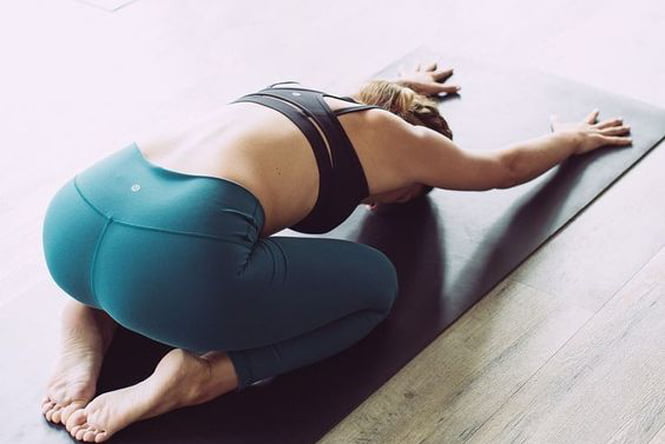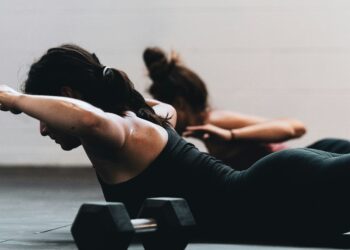There’s nothing like a morning workout to give you that spark of energy so you can start your day on a high. Rushed for time? Kickstart your day with this fast and fabulous routine by Exercise Scientist Damien Kelly, in under 10 minutes.
Often we reach for a morning cuppa to wake up and focus for the day, but jumping into a workout first thing is healthier and much more effective. It will energise you, get that heart pumping, boost metabolism and get more oxygen to the brain. In fact, even a brief workout can boost brain and memory function to make the most of your day. I’ve put together a quick but quality workout that you can run through in under 10 minutes every morning in your lounge room.
So set your alarm and get going!
 image via pinterest
image via pinterest
THE WORKOUT:
Do 3 rounds in a circuit format of:
10 Cobras
10 Russian Twists
6 Slow Burpees
6 Supine Walk Outs
16 Walking Lunges
GET MOVING:
1. The Cobra
Why: So many of us spend our days sitting at desks or in cars in a position called triple flexion. It means knees, hips and spine are all in constant flexion. The spine in particular hates this position and it’s a common cause of lower back pain. The cobra helps to correct this by taking your spine into extension.
How: Lie on your stomach and place your hands, palm down, under your shoulders. Press up with your arms, lifting only your upper torso off the ground. Your hip bones will remain on the ground, and your spine will move into a healthy, pain-free extension. Hold for a couple of seconds, lower back down to the ground and repeat.
2. Russian Twists
Why: After a night in weird and wacky positions, the spine needs a good stretch. This twisting move will get your lower back stretched out. Remember to stay braced through your core to fire up those all important core muscles, for the busy day ahead.
How: Lie on your back, stretch your arms to either side, with palms down. Lift your feet off the ground, and bend your knees and hips to ninety degrees. Your thighs should be vertical and your shins horizontal. Brace your core muscles, like a belt wrapping around your waist. Now lower your legs, directly to the left, you’ll feel the side abdominals on your right stretch. Pause close to the ground, and bring your legs back to neutral. Next rep lower to the right.
3. Slow Burpees
Why: It’s the best whole body move on the planet but being the morning, let’s do a slower version. It’ll wake every muscle in your body and really get the party started.
How: To start, squat down and place your hands on the ground just in front of your feet. Step your feet out backwards so that your body forms a strong prone position. Don’t sag your hips or stick your bum up in the air. Hold for a second then step your feet back close to your hands. Next, stand up straight, reach your hands up to the sky and go straight back into your next rep.
4. Supine Walkouts
Why: Burpees focuses primarily on your anterior muscles so lets balance things out with this posterior move. Targets hamstrings, glutes and lower back.
How: Lie on your back with your knees at ninety degrees and feet flat on the ground. Push your hips up high so that your body makes one straight line from shoulders to knees. Now, holding your hips up throughout, walk your feet away from you. Use small steps and focus your weight through your heels. Keeping your backside off the ground see if you can walk out until your knees are almost straight. Walk back in – that’s one rep.
5. Walking Lunges
Why: Now that you’re warmed up, let’s really get your lower body firing with the best butt move on the planet. It will also open your hip joints.
How: With feet shoulder width apart, imagine you are standing on train tracks. Stride forward with your left foot along the left train track. Land lightly. Once your left foot lands on the ground, allow your right knee to sink towards the ground. Your left shin should finish the movement vertical, with knee over ankle. Your back knee should descend to a point a few inches off the ground. Now push off, swing your right leg past your left and land it out in front ready for another lunge.
Source: www.ncbi.nlm.nih.gov



















